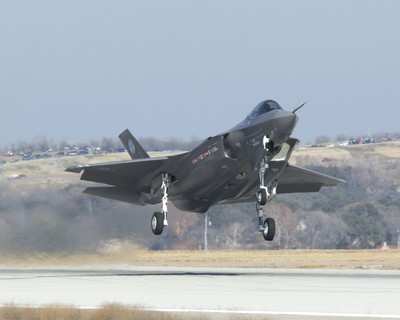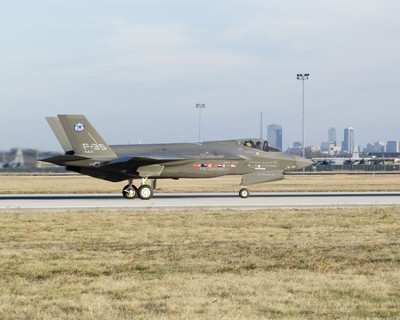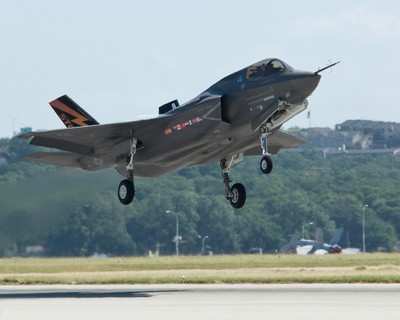F-35B Prepares For Transition To STOVL Flights
The conventional takeoff and landing (CTOL) Lockheed Martin
F-35A Lightning II notched its 50th flight last week in preparation
for testing at Edwards Air Force Base, CA, while the F-35B short
takeoff/vertical landing (STOVL) variant began a planned
modification interval that will lead to STOVL-mode flight early
next year.

In preparation for its deployment to Edwards, the F-35A is
conducting a final series of in-flight refueling tests from its
Fort Worth base, having taken on 12,000 pounds of fuel during a
three-hour flight on Thursday, September 25.
Additionally, on September 16, the aircraft flew for the first
time with a full weapons load in its internal bays. The mock-up
weapons duplicate the dimensions and weight of a typical F-35
strike mission load-out in full stealth configuration: two
2,000-pound Joint Direct Attack Munitions and two Advanced Medium
Range Air-to-Air Missiles.
With more than 5,000 pounds of ordnance in its internal weapons
bays, performance remained strong, with no discernable indication
of the degradation sometimes experienced in current fighters
because of aerodynamic drag. "The acceleration in
maximum-afterburner takeoff was very quick," said F-35 Chief Test
Pilot Jon Beesley. "The climb-out with full internal weapons
carriage was particularly impressive to me. Very pleasant to see
clean-fighter climb rates and angles while carrying a combat
load."

At Edwards Air Force Base, pilots will test the F-35A's ability
to shut down and restart the engine while airborne.
While AA-1 has been preparing for its Edwards deployment, the
STOVL F-35B has undergone a range of handling-qualities tests,
engine-power transitions from idle to full afterburner, extended
its retractable fuel probe, and opened and closed all of the doors
associated with its STOVL propulsion system.
"The aircraft performed exactly as we predicted with the STOVL
doors in their various positions. It has exceeded our expectations
in its 14 flights to date, and this was a key milestone to achieve
before starting vertical flight operations in the next few months,"
said Dan Crowley, Lockheed Martin executive vice president and F-35
program general manager. The tests validated computer modeling and
simulation predictions and moved the aircraft a step closer to
vertical flight early next year.
The F-35B now begins a 12-week modification period for system
evaluations, calibrations and software and hardware updates,
including the installation of the Pratt & Whitney F135 engine
that is certified for short takeoffs, hovers, vertical landings and
the full range of STOVL-mode and conventional flight. The test plan
calls for transition to vertical flight operations in early
2009.
With four System Development and Demonstration aircraft complete
and the remaining 15 in production, Lockheed Martin plans to begin
delivering one F-35 per month, with all SDD aircraft scheduled for
completion by late 2009.

In related news, Lockheed says its second F-35B has transitioned
from production to the flight line and is undergoing ground testing
prior to its projected first flight in early 2009. The company
stressed the program is on schedule to begin delivery of
production-model aircraft to the armed services beginning in
2010.
 ANN's Daily Aero-Linx (04.30.25)
ANN's Daily Aero-Linx (04.30.25) ANN FAQ: Turn On Post Notifications
ANN FAQ: Turn On Post Notifications Classic Aero-TV: Agile Aeros Jeff Greason--Disruptive Aerospace Innovations
Classic Aero-TV: Agile Aeros Jeff Greason--Disruptive Aerospace Innovations Aero-News: Quote of the Day (04.30.25)
Aero-News: Quote of the Day (04.30.25) ANN's Daily Aero-Term (04.30.25): Expedite
ANN's Daily Aero-Term (04.30.25): Expedite





